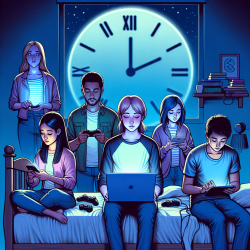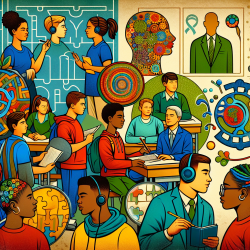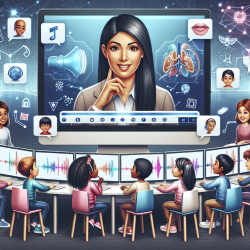Understanding the Impact of Electronic Devices on Teen Sleep
In today's digital age, electronic devices and social networks are integral to the lives of adolescents. However, their pervasive use can have significant implications for sleep, a critical component of adolescent health and development. The EHDLA study, "Electronic device and social network use and sleep outcomes among adolescents," provides insights into these impacts and offers valuable information for practitioners working with teens.
Key Findings from the EHDLA Study
The EHDLA study examined the relationship between electronic device use and sleep outcomes among 1101 Spanish adolescents aged 12 to 17. The study identified several key findings:
- Cell phone use was most strongly associated with reduced sleep time and increased sleep-related problems.
- For boys, time spent on cell phones and video games was linked to sleep issues, while for girls, cell phone use and time on WhatsApp were significant factors.
- Social networks like Instagram and WhatsApp were associated with sleep-related problems, particularly among girls.
- Adherence to the Mediterranean diet and psychosocial health were also influential factors in sleep outcomes.
Implications for Practitioners
Practitioners working with adolescents can leverage these findings to enhance their interventions and support strategies. Here are some practical applications:
- Encourage Digital Detox: Educate teens and parents about the impact of electronic devices on sleep and encourage setting boundaries for device use, especially before bedtime.
- Promote Healthy Habits: Advocate for a balanced lifestyle that includes regular physical activity, adherence to a healthy diet, and adequate sleep.
- Address Psychosocial Health: Recognize the role of psychosocial factors in sleep and provide support for stress management and emotional well-being.
- Gender-Specific Strategies: Tailor interventions to address the specific needs and behaviors of boys and girls, as their device use patterns and impacts on sleep may differ.
Encouraging Further Research
While the EHDLA study provides valuable insights, it also highlights the need for further research to explore the complex interactions between electronic device use, social networks, and sleep. Practitioners are encouraged to stay informed about emerging research and consider participating in studies that contribute to a deeper understanding of these dynamics.
To read the original research paper, please follow this link: Electronic device and social network use and sleep outcomes among adolescents: the EHDLA study.










